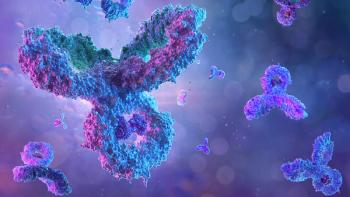
Scientific Due Diligence: The Key to Successful Partnerships
Mergers, acquisitions, or partnership agreements in the biopharma sector often flounder due to poor preparation and missteps during scientific due diligence.
Partnering, mergers and acquisitions (M&As), and product licensing require careful planning, particularly when it comes to preparing scientific, technical, and regulatory information about complex therapeutic products. While the generation of such information is the seller’s duty, assessing the opportunities is the buyer’s remit. For biotech companies and academic developers, the process of assessing the potential for a partnership or licensing agreement is best understood as scientific due diligence. In this sense, due diligence is best understood as making sure one gets what they expect.
Partnerships are driven by the externalization of R&D, demanding technical and scientific due diligence. Externalization through product licensing or company acquisitions is also contributing to a growing trend for partnering. Private equity is also playing an increasingly important role in the growth of the pharma sector, and private equity providers may not always have the right expertise to assess opportunities. Whether a biotech company is considering a M&A or partnering agreement or contemplating licensing a product or technology platform, it should be ready to present its assets to potential partners and equity providers.
The number of early-stage biotech partnerships is increasing year on year. PwC expects life sciences M&A investments to reach between US$350 billion and $400 billion with continued biotech acquisitions in the $5 billion to $15 billion range as companies look to diversify their business (1).
Partnerships drive success
The focus of academic researchers is to create scientific knowledge from their research and to publish. Translating this knowledge in a highly regulated environment to commercial biopharmaceutical products is a remarkable challenge. To be successful, additional skills are needed.
For growing biotech companies and academic developers, the experience and resources of larger pharmaceutical companies is invaluable in late-stage drug development and the authorization and commercialization process. A McKinsey report found that small companies that launch their first product on their own often face issues when it comes to product uptake and launch value. Its analysis shows that many first-time launchers of pharma products struggle to maximize drug adoption and realize the expected value from their launches. Furthermore, the research found that the median first-time launcher reaches just 63% of expectations, compared with 93% for the experienced equivalent (2).
Partnerships have been shown to drive up the success rate of European Medicines Agency (EMA) marketing authorization applications, with whole company acquisitions having a higher success rate than product acquisitions or partial license agreements. Collaboration with larger companies may be a more effective strategy for smaller companies to bring new products to market (3).
Plan for value generation
As more deals are being made every day, there is an increased need for due diligence and academics, and early-stage biotech companies need to prepare for it. Inevitably, small biotech companies will reach a stage where they need to seriously consider the prospect of a merger, acquisition, or partnership—or the next investment round. It is never too early to prepare to convince both new and existing investors that more funding is important for value generation.
Compared with biotech startups, academics have a very different culture. In the academic world, the focus is on scientific kudos and publications to maintain grant funding. There is less emphasis on readiness for due diligence and documentation relating to partnerships or funding. Most universities have technology transfer offices that can offer a certain level of support, but often they don't have the time, depth of knowledge, or rigor to prepare a comprehensive scientific due diligence package for partnering.
Particularly on the seller side, underestimating the significant effort that it takes to prepare for due diligence is a common issue. Small companies tend to focus on day-to-day operations, which often results in not enough time being set aside to prepare for due diligence properly.
The process of scientific due diligence is not just a one-time event that takes place and then it’s over. For the completion of one deal, a seller may need to undergo up to 10 due diligences by interested parties. Young biotechs and academic developers must prepare for scientific due diligence every day, and as such all research and development plans—including reports—should be prepared for due diligence readiness.
Dos and don’ts for optimum scientific due diligence
Academic programs and early-phase biotechs seeking partnerships must be ready to provide full and accurate scientific, technical, and regulatory information relating to their business and products. Clear, accurate data presentation and documentation is essential, as it gives prospective partners and investors a complete and transparent picture of assets and facilitate the due diligence process on both sides. There are a number of critical dos and don’ts to achieve optimum scientific due diligence outcomes for the seller and buyer side to build successful business partnerships.
Before partnership conversations
DO have a target profile of your ideal partner in mind. From a seller perspective, what would be the best partner to increase the value of your assets and to complement the skill set of the organization. What does a potential partner want to see? With this in mind, prepare for scientific due diligence every day. Know your plans and data and be prepared to explain them and address questions in a timely manner. Set up a good quality data room structured by disciplines comprising all important plans and results.
DON’T overlook making sure that key rights on technology and/or products belong to the party who seeks to outlicense or is the target of the projected share purchase. IP is key for any biopharmaceutical business. As a buyer, DO consider a top-level asset screen before progressing to full due diligence. DO identify red flags early on to save valuable resources.
When partnership conversations begin
DO check for strategic fit early on. Make sure the proposed partnership is not just about the product and assets, but that it is also about the fit. Perform an initial high-level screening of the strategic fit of the opportunity with overall company strategy. Very often, particularly for large companies with structured M&A activities, the due diligence team is not the one that will develop the product. Post-sale, that can create challenges due to lack of championship on the buyer side.
DO maintain ongoing collaboration and communication with the interested party and internal stakeholders. This is key to avoiding mistrust and setbacks. Be open and honest in your questions and answers. Ensure commitment from both parties to the process. An effective way to do this is to plan for face-to-face meetings to foster mutual understanding of data, resolve potential issues, and agree on mitigation strategies.
DO have appropriate internal resources available for the due diligence activity, including a gatekeeper for the question and answer (Q&A) process. DON’T obscure issues. Lack of transparency or even hiding critical issues will sooner or later surface and can have potential legal consequences.
Getting deeper into partnership conversations
DO limit the number of Q&A rounds. Too many Q&A rounds can lead to an inefficient process, unnecessarily consuming resources of both the buyer and the seller. In addition, if the process runs on a non-exclusive basis, an overly extended process may lead to a situation where a competing buyer takes away the opportunity.
DO consider on-site visits. Though on-site visits are optional, they are incredibly useful to discuss initial findings and potential solutions. In a project where the authors were involved, the onsite visit led to a joint buyer-seller break out session where members of both teams resolved critical findings in the manufacture and control of assets by leveraging complementary skill sets. Without this session, the findings would have ended the partnering negotiations.
Even in less critical situations, onsite visits reduce the number of time-consuming Q&A rounds. In addition, this is a good opportunity to assess the cultural fit of the teams, who, depending on the deal structure, would work together after deal closing.
DO review the raw data as appropriate. The European Union has recognized reproducibility as a major issue for funding of biomedical research as recently as 2021 (4). In the experience of the authors, lack of reproducibility had a major impact on a venture capital-funded university spin-out company where the scientific due diligence process did not identify concerns with reproducibility of preclinical data. A safety signal was encountered in the first patient dosed, leading to the clinical trial being put on hold.
An internal investigation with external parties reviewed the scientific rigor, validity, and integrity of the preclinical research conducted in the founding university and in the start-up company. There were several major findings of selective data presentation, and missing or inappropriate controls were also identified that may have obscured significant safety concerns in the preclinical research. It is clear from this incident that even data from peer-reviewed papers are not necessarily a quality mark for data integrity and raw data should be included in the review.
DON’T neglect to extend the process of scientific due diligence to all relevant functions needed for a full process. A small core team may carry out the initial evaluation of the business case, but once you get deeper into the process, it is important to define the roles and responsibilities of all the stakeholders that will be needed until the end of the process. These should include clinical, non-clinical, regulatory, manufacturing, IP, legal, and commercial stakeholders. All these stakeholders should be involved in the information and data review processes when asset-related data are shared in a virtual data room.
DON’T assume everyone will remember what was agreed upon. Document what is discussed and decided as you go along. As time passes, people on on both sides may leave jobs and roles and responsibilities may change. DO incorporate important cornerstones into the contractual framework.
Scientific due diligence–key to partnership success
Without good scientific due diligence, there is a risk that buyers will not get what they thought they were buying, or that sellers won’t get the best deal possible for their product or technology. Entering into new partnerships, whether one is buying or selling, is highly complex. The possibility of scientific due diligence should be part of daily business, data, and scientific processes to increase value.
Even with the best ongoing preparation, when scientific due diligence activity begins, it will be a drain on resources. Small biotechs and academic developers who may well be encountering the due diligence process for the first time often don’t have the resources or knowledge to tackle the complex scientific due diligence process alone. Consider seeking out external help and advice to support the scientific assessment, explain the structures, and facilitate the process, such that partnerships can deliver the desired benefits to all parties.
References
1. PwC, “Pharmaceutical & Life Sciences: Deals 2022 Outlook,”
2. E. Harputlugil et al., “First-time Launchers in the Pharmaceutical Industry,” mckinsey.com, Feb. 12, 2021
3. C.A. van den Bogert et al., Nat. Rev. Drug. Discov.online, DOI:10.1038/nrd4468 (Nov 14. 2014).
4. C.G. Begley and L.M. Ellis, Nature 483, 531–533 (2012)
About the authors
Diane Seimetz is principal consultant, Biopharma Excellence. Dr. Jörg Schneider is associate principal consultant, Biopharma Excellence.
Newsletter
Stay at the forefront of biopharmaceutical innovation—subscribe to BioPharm International for expert insights on drug development, manufacturing, compliance, and more.




